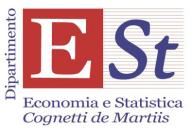By Hua Wang[1]
China’s electric vehicle industry
China has been the largest market for new energy vehicles (NEVs) since 2016
(China Association of Automobile Manufacturers, CAAM). In 2022, China accounted for 65% of global NEV sales, and its volume reached 6.88 million units[2].
Chinese carmakers are taking the leadership among global players in terms of volume of sales (INSIDEEVs.com). The number of Chinese carmakers among the top 20 global NEV carmakers has constantly increased, expanding from seven in 2020, to eight in 2021, then 10 in 2022. However, it is noteworthy to mention the issue of “proliferation”: there are over 100 carmakers in the country based on 2022 data. A wave of consolidation can be expected in the coming years.
BYD, SAIC-GM-Wuling (a Sino-US joint venture), GAC, SAIC, Changan, Chery, Geely, Dongfeng, Volvo (the affiliate of Geely), etc. are key players, followed by new entry in the market, like NIO (which entered the global top 20 list in 2020), Xpeng (in the global top 20 list in 2021, whose 5% of share was acquired by Volkswagen in 2023), Li Auto, and Hozon (in the global top 20 list of 2022).[3]
In this context, it is interesting to investigate how Chinese new energy carmakers are evolving and, at the same time, how those companies managed to shift from reverse engineering to the new platform strategy in the EV segment, then to gain the global competitiveness.
In this short contribution, the platform strategy is used as the theoretical approach to conduct the analysis based on the examination of two Chinese companies, BYD and Geely. These two companies have similar transition from reverse engineering to platform strategy, but they have distinctive features in terms of approaches to realize the platform strategy.
Cases of BYD
The trajectory of automobile electrification by BYD is unique in the world, and cannot be duplicated by any other carmakers. The transition from the reverse engineering for the internal combustion engine (ICE) cars, to the forward engineering for hybrid and electric cars, is embedded in its unique technology know-how of battery design and mass production since the creation of the company.
BYD debuted its consumer batteries business since 1995. Starting from scratch, and with very limited technology know-how, one of the key drivers to the success is the logic of reverse engineering, by duplicating matured technology from Korea, and Japan. After years of development, the company became the supplier of Motorola and Nokia etc. in 2003. In 2002 the company was listed on the Hong Kong Stock Exchange.
In 2003, BYD made a radical strategic move, decided to access to the auto industry, via the acquisition of one Chinese company that has the license of car production (Xi'an Qinchuan). The launch of the first sedan F3 had recognized the big success.
During this phase, the product architecture of BYD cars has been essentially based on the reverse engineering. For example, the model F3 launched in 2005 was based on Corolla of Toyota. The compact car F0, was a copy of Toyota Aygo, then the sedan “S6” was based on Toyota Previa, and its F3R, has similarities with GM Buick HRV. In addition, BYD’s “S8” was based on the Benz CLK, as of its “M6”, was an imitation of Toyota Previa. BYD’s engine model “476ZQA 1.5T” has lots of similarities as that of Volkswagen EA111 1.4T.
When expanding to the hybrid cars, since there are few carmakers offering matured car models to make the reverse engineering, BYD was forced to increase the percentage of in-house technology development, including electric motors, electric control, among the other. Thanks to its cumulated technology advantage in the battery field since the foundation of the company, this process of integration of core technology of hybrid and EV cars is much easier than other car companies. This unique technology roadmap has marked the significant difference with any other carmakers.
In 2008, BYD started production of PHEV (plug-in hybrid electric vehicle). The PHEV mass production model is F3DM (with the following technical feature: 1.0 gasoline engine, 50KW and two electric motors, M1 25KW and M2 50KW, and pure electric endurance of 100km). This stage was identified as DM1.0 hybrid system.
In 2017, BYD’s technology on new energy vehicles further upgraded, and was featured as DM2.0 hybrid system. Internally, it was summarized as ”542” technology: 5 stands for the 100 km acceleration within the 5 seconds, 4 means 4-wheel drive hybrid model (a typical P1+P3 structure, consisting of a 1.5T engine and a 6DCT transmission and an 110kW drive moto), 2 stands for less than 2L per KM fuel consumption. Between 2019-2021, BYD introduced the third-generation battery system, the blade battery, in its car model "Han".
In 2021, BYD pure electric platform E-platform 3.0 was launched. A deep integration of various systems is named as 8-in-1, the electric powertrain integrates the Vehicle Control Unit, the Battery Management System, Power Distribution Unit, Drive Motor, Motor Controller, Transmission and On-Board Charger. Such highlevel integration is unique compare to the competitors.
The high-level integration is also embodied in the inter-linkage between its own developed BYD OS (operation system) and its hardware, this provides better driving performance in terms of safety and intelligent driving.
In 2022, BYD sold 1.85 million vehicles annually, with 49.5% EVs and 50.5% PHEVs. Of these, 97% of cars are sold in China. The company’s operating income reached 61.4 billion USD, up 84% from 2022. BYD’s net profit was 2.4 billion USD, a yearly increase of 403% (BYD 2022 financial report).
Case of Geely
The evolution of Geely’s platform is a long and complex journey. The first phase of its development was based on the reverse-engineering quasi-open product architecture. Based on an increasing demand for new car models and multiple brands, Geely understood the necessity to build the forward engineering-based platform strategy. While during the transitional period, facing both the pressure of quick success of sales, and huge investment on the platform building, Geely had to make the concession and focus on developing new car models based on quasi-open product architecture, while with more technology improvement (FE, KC, NL, then followed by BMA). The creation of CEVT and the CMA platform has been the first systematic learning for Geely on how to make the forward engineering and the creation of the platform. A brand-new pure EV platform (the PMA) was developed in China, instead of at CEVT in Sweden, out of considerations for further internalization of R&D capacity by Chinese engineering team as well as for a safer technology transfer from Volvo.
Geely’s first stage development in the late 1990s was mainly based on reverse engineering of different popular car models from foreign car companies. The very early car model, the Haoqing, started its production in the 1998, was based on the Charade model of FAW Xiali. Technology of Charade is from Daihatsu, Toyota's affiliate. Since then a series of cars were produced based on the reverse engineering and quasi-open product architecture strategy (Fujimoto, 2007).[4] The quasi-open architecture design, via the reserve engineering, also requires technological and engineering capability than simply copying. It requires the innovative supply chain management so as to make the balance between quality, cost effectiveness, and mass production.
The second stage of product development started from 2006, when the company announced its ambition to launch platform strategy. One Chinese returnees with rich auto technology experience was recruited as the senior vice president in charge of this plan (Wang et al, 2021).[5] From 2006 to 2013, Geely Group experienced a critical strategic dilemma between the quick development via reverse engineering driven quasi-open architecture, and the shift towards the forward engineering platform design, which requests time and huge resources (which requires a delicate balance between the short-term profitability and long-term development).
In 2014, Geely’s new vision was released, “Making Refined Cars for Everyone.” Accordingly, the new branding strategy was to centralize the resource to build one brand: Geely. Three previous brands, Emgrand, Gleagle, and Englon merged to one Geely brand. In terms of platform, there was a further rationalization into three platforms, covering A00 till B segments, while still those so called platforms were still based on quasi-open architecture, and based on various Toyota car models.
It was only d. In 2017, three years after the R&D, the CMA platform, covering cars from B to C segment, was built by CEVT (China Euro Vehicle Technology AB), an affiliate of Geely in Sweden, while mainly with the technology support from Volvo.
Years later, Geely further internalized the capacity of forward engineering, by creating BMA (B-segment Modular Architecture) and PMA platform (Pure electric Modular Architecture) in China with its own R&D team, while still with some technology support from Volvo. This project of BMA kicked off in 2014, one year after the CMA project, in China. Based on the learning of CMA, the efficiency of R&D further increased. The number of engineers for BMA platform was around 500, versus over 2,000 for CMA. The development time reduced to less than 24 months, almost half of the regular time of development of 40 months. It took over four years to complete the design, with nearly 100 modular architecture experts from over 20 countries.
The PMA platform (Pure-electric Modular Architecture), a strategic platform for pure electric vehicles, was announced by Li Shufu in May 2017 in China. This platform is composed of two sub platforms, PMA1 and PMA2. The former one covers A and B class, 5-7 seats EVs, and PMA2 is for mini 2 seat EVs. This platform was developed via the joint venture between Geely and Volvo in China. As China is the biggest EV car production and market and has almost complete supply chain, the R&D of EV platform, aiming for the volume sales, is more efficient in China than in Sweden.
In 2022, Geely reached total annual sales volume of 1,432,988 units, up 8% YoY, and the share of new energy and electrified vehicles reached 23%, or 328,727 units, including Geely Auto, Geometry, Lynk & Co, Zeekr, Livan brands (Geely 2023 annual report).
Analysis and Conclusion
Platform strategy is the hidden competitiveness of a car company. The case of BYD and Geely reveals different trajectories of product architecture, and the platform strategy. The architecture innovation can be identified as one of the key successful factors for BYD and Geely, to become emerging global carmakers.
While the difference between BYD and Geely is that BYD is taking an approach of high vertical integration, especially the internalization of battery and related technologies, and the mass production of those components for other carmakers as well. While Geely is taking the cross-border M&A to realize its first forward engineered platform.
Both companies have taken audacious technology move, upgrading from ICE technology to electrification technology. Without the decision at the corporate strategy level, the architectural innovation could not happened. Despite BYD and Geely are all listed companies, subjecting to the constrains of shareholders, quite often in search of short-term profitability, the vision of two funders, WANG Chuanfu and LI Shufu, are the core to make the balance between short-term financial result, and long-term sustainability. This might be the significant difference compared to those listed auto company lead by top professional managers.
[1] EmLyon Business School,
[2] Source: China association of automobile manufacturers (CAAM, http://en.caam.org.cn/Index/show/catid/60/id/1902.html).
[3]Source: https://insideevs.com/news/651947/global-plugin-car-sales-december2022/. Compiled by author.
[4] Fujimoto, Takahiro. “Architecture-Based Comparative Advantage - A Design Information View of Manufacturing.” Evolutionary and Institutional Economics Review 4:1 (2007), 55-112.
[5] Wang, Hua, Giovanni Balcet, Wenxian Zhang, 2021, Geely Drives Out, The Rise of the New Chinese Automaker in the Global Landscape, New Jersey: World Scientific, 316 p.









